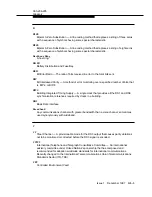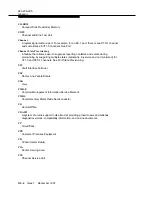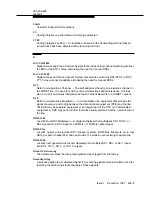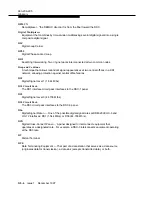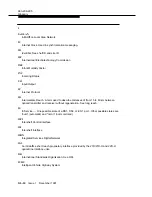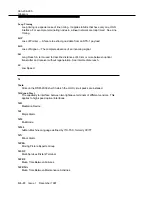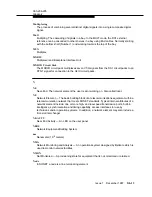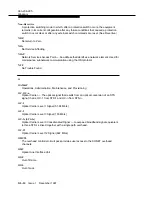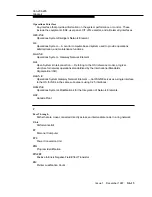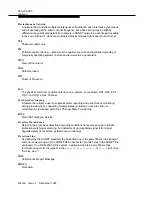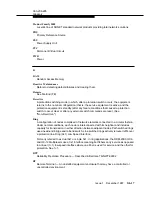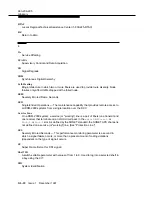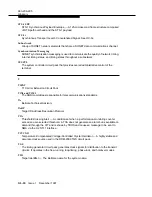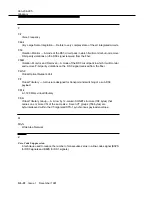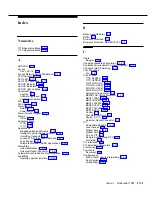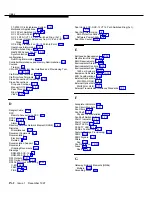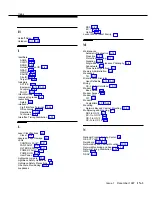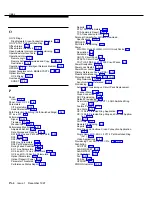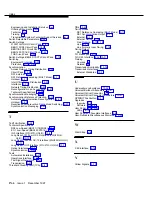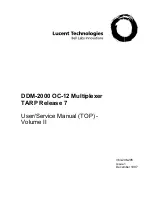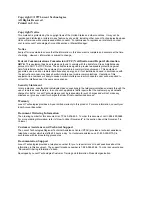
363-206-295
Glossary
GL-16
Issue 1
December 1997
Plesiochronous Network
A network that contains multiple maintenance subnetworks, each internally synchronous
and all operating at the same nominal frequency, but whose timing may be slightly
different at any particular instant. For example in SONET networks, each timing traceable
to their own Stratum 1 clock are considered plesiochronous with respect to each other.
PLL
Phased-Locked Loop
PM
Performance Monitoring — Measures the quality of service and identifies degrading or
marginally operating systems (before an alarm would be generated).
PMN
Power Minor Alarm
POH
Path Overhead
POP
Points of Presence
Port
The physical, electrical, or optical interface on a system. For example, DS1, DS3, EC-1,
OC-3, and OC-12. See Channel.
Port State Provisioning
A feature that allows a user to suppress alarm reporting and performance monitoring
during provisioning by supporting multiple states (automatic, in-service and not
monitored) for low speed ports. See Channel State Provisioning.
POTS
Plain Old Telephone Service
Proactive Maintenance
Refers to the process of detecting degrading conditions not severe enough to initiate
protection switching or alarming, but indicative of an impending signal fail or signal
degrade defect (for example, performance monitoring).
Protection Line
As defined by the SONET standard, the protection line is the pair of fibers (one transmit
and one receive) that carry the SONET APS channel (K1 and K2 bytes in the SONET line
overhead). On a DDM-2000 OC-3 system, a
protection line is a pair of fibers that
terminate on an OLIU circuit pack in the
main-2
,
fn-a-2
,
fn-b-2
, or
fn-c-2
slot. (See
"Service Line.")
PRM
Performance Report Message
PROTN
Protection


